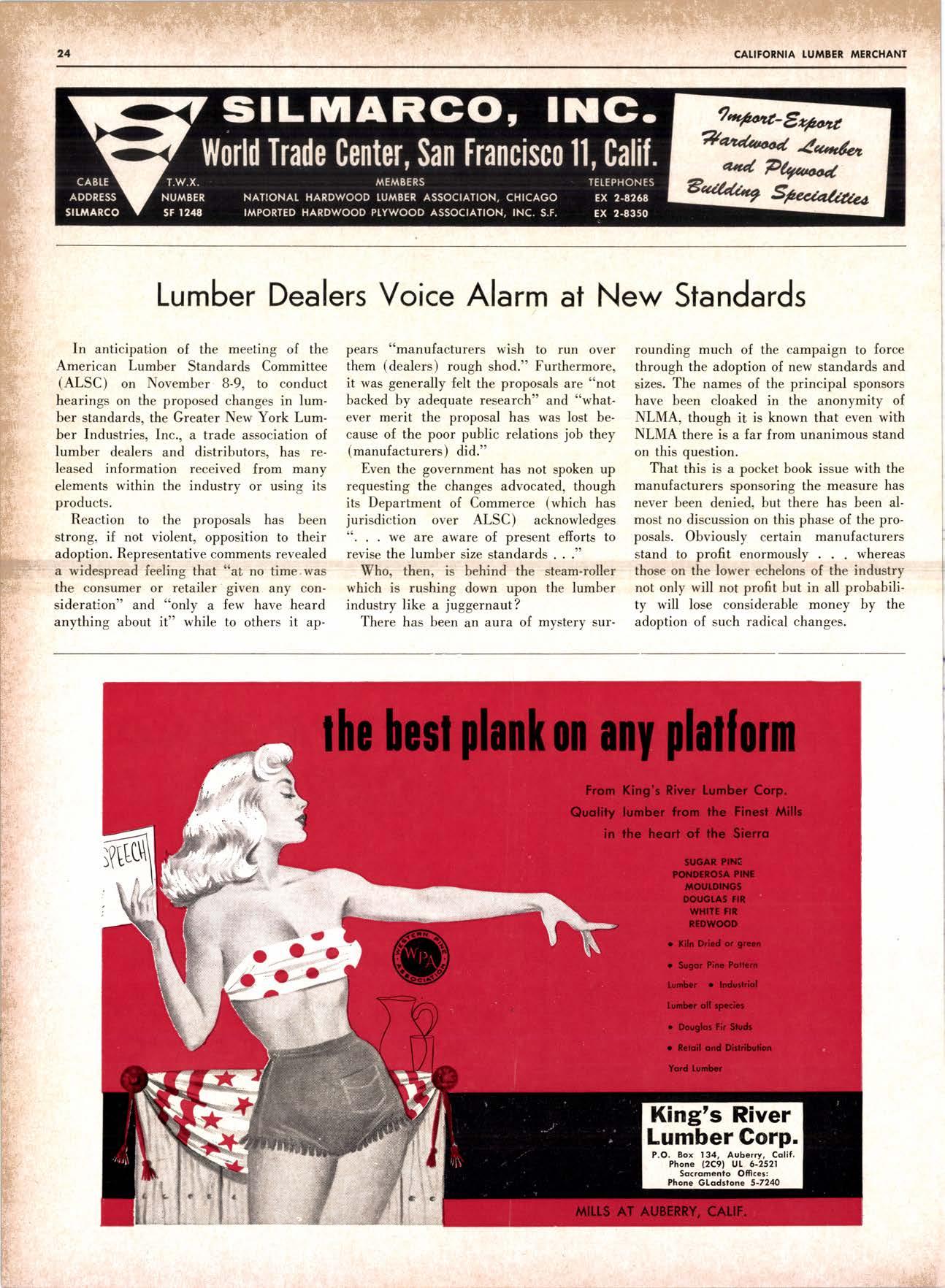
1 minute read
Lumber Dealers Voice Alarm at New Standards
In anticipation of the meeting of the American Lumber Standards Committee (ALSC) on November 8-9, to conduct hearings on the proposed changes in lumber standards, the Greater New York Lumber Industries, Inc., a trade association of lumber dealers and distributors, has released information received from many elements within the industry or using its products.
Reaction to the proposals has been strong, if not violent, opposition to their adoption. Representative comments revealed a widespread feeling that o'at no tinre.was the consumer or retailer given any consideration" and "only a few have heard anything about it" while to others it ap- pears oomanufacturers wish to run over them (dealers) rough shod." Furthermore, it was generally felt the proposals are "not backed by adequate research" and'owhatever merit the proposal has was lost because of the poor public relations job they (manufacturers) did."
Even the government has not spoken up requesting the changes advocated, though its Department of Commerce (which has jurisdiction over ALSC) acknowledges ". . . we are aware of present efiorts to revise the lumber size standards . . ."
Who, then, is behind the steam.roller which is rushing down upon the lumber industry like a juggernaut?
There has been an aura of mysterv sur- rounding much of the campaign to force through the adoption of new standards and sizes. The names of the principal sponsors have been cloaked in the anonymity of NLMA, though it is known that even with NLMA there is a far from unanimous stand on this question.
That this is a pocket book issue with the manufacturers sponsoring the measure has never been denied. but there has been almost no discussion on this phase of the proposals. Obviously certain manufacturers stand to profit enormously . whereas those on the lower eclrelons of the industry not only will not profit but in all probabili ty will lose considerable money by the adoption of such radical changes.
Simon L. Miller, President of Greater New York Lumber Industries, calls for more statesmanship in handling this explosive issue. "Before any such proposals should even be considered by ALSC, there should be extensive research to determine what changes, if any, are desirable in lumber standards, as well as their potential efiect. This should start at the consumer level and work up through the retailer and wholesaler. with the manufacturer at the final point of consideration. As it stands now, we have the cart before the horse. The manufacturer is attempting to dictate what the consumer should have and what the retail lumber dealers must sell."










